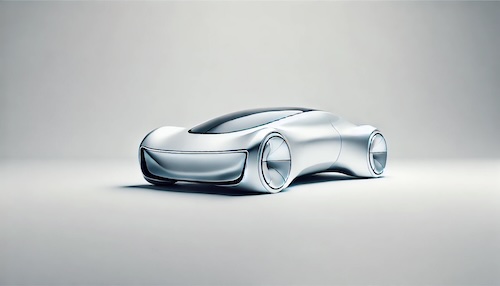The 6 levels of car automation (0-5).
November 19, 2019

 Because no two automated-driving technologies are exactly alike, SAE International’s standard J3016 defines six levels of automation for automakers, suppliers, and policymakers to use to classify a system’s sophistication. The pivotal change occurs between Levels 2 and 3, when responsibility for monitoring the driving environment shifts from the driver to the system.
Because no two automated-driving technologies are exactly alike, SAE International’s standard J3016 defines six levels of automation for automakers, suppliers, and policymakers to use to classify a system’s sophistication. The pivotal change occurs between Levels 2 and 3, when responsibility for monitoring the driving environment shifts from the driver to the system.

Level 0 --> No Automation
System capability: None. • Driver involvement: The human at the wheel steers, brakes, accelerates, and negotiates traffic. • Examples: Most all cars being 2010, lower end modern cars. A Ford model T, a 1967 Porsche 911, a 2018 Kia Rio.
Level 1 --> Driver Assistance
System capability: Under certain conditions, the car controls either the steering or the vehicle speed, but not both simultaneously. • Driver involvement: The driver performs all other aspects of driving and has full responsibility for monitoring the road and taking over if the assistance system fails to act appropriately. • Example: Adaptive cruise control.
Level 2 --> Partial Automation
System capability: The car can steer, accelerate, and brake in certain circumstances. • Driver involvement: Tactical maneuvers such as responding to traffic signals or changing lanes largely fall to the driver, as does scanning for hazards. The driver may have to keep a hand on the wheel as a proxy for paying attention. • Examples: Audi Traffic Jam Assist, Cadillac Super Cruise, Mercedes-Benz Driver Assistance Systems, Tesla Autopilot, Volvo Pilot Assist.
Level 3 --> Conditional Automation
System capability: In the right conditions, the car can manage most aspects of driving, including monitoring the environment. The system prompts the driver to intervene when it encounters a scenario it can’t navigate. • Driver involvement: The driver must be available to take over at any time. • Example: Audi Traffic Jam Pilot.
Level 4 --> High Automation
System capability: The car can operate without human input or oversight but only under select conditions defined by factors such as road type or geographic area. • Driver involvement: In a shared car restricted to a defined area, there may not be any. But in a privately owned Level 4 car, the driver might manage all driving duties on surface streets then become a passenger as the car enters a highway. • Example: Google’s now-defunct Firefly pod-car prototype, which had neither pedals nor a steering wheel and was restricted to a top speed of 25 mph.
Level 5 --> Full Automation
System capability: The driverless car can operate on any road and in any conditions a human driver could negotiate. • Driver involvement: Entering a destination. • Example: None yet, but Waymo—formerly Google’s driverless-car project—is now using a fleet of 600 Chrysler Pacifica hybrids to develop its Level 5 tech for production.
